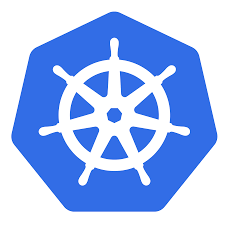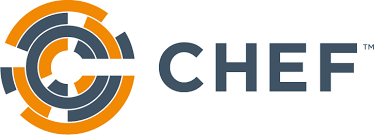If you’ve ever tried to keep a modern DevOps setup running smoothly, you know the chaos that can creep in fast – a dozen moving parts, scripts everywhere, and that one deployment that breaks for no clear reason. That’s where orchestration tools step in.
These tools aren’t just about automation anymore; they’re about bringing structure to the madness. They connect CI/CD pipelines, manage containers, handle rollbacks, and make sure everything talks to each other without you losing an entire weekend to debugging YAML.
In this guide, we’ll walk through some of the best orchestration tools in DevOps right now – the ones that actually make teams faster, not just busier.

1. AppFirst
AppFirst was built to make infrastructure orchestration feel less like a side project and more like part of a natural workflow. Instead of juggling Terraform files, cloud templates, or homegrown frameworks, developers can simply define what their application needs, and AppFirst handles the infrastructure setup behind the scenes. The idea is simple: let teams focus on writing and shipping code, not wrestling with YAML or cloud configurations.
The platform automatically provisions secure and compliant infrastructure across AWS, Azure, and GCP. It includes built-in logging, monitoring, and auditing, eliminating the need to wire everything up manually. Whether teams prefer a SaaS deployment or choose to self-host, AppFirst integrates into existing processes without imposing a specific workflow. It is designed to remove friction, enable developers to move quickly, and maintain visibility and control over their environments.
נקודות עיקריות:
- Automated provisioning of secure infrastructure across AWS, Azure, and GCP
- Built-in monitoring, alerting, and auditing tools
- Cost visibility by application and environment
- Works as SaaS or self-hosted deployment
- No need to maintain Terraform, CDK, or internal DevOps tooling
Who it’s best for:
- Development teams that want to focus on features instead of infrastructure
- Companies standardizing cloud environments across multiple teams
- Teams looking to simplify compliance and security without adding overhead
- Organizations without a dedicated DevOps team but needing scalable infrastructure
פרטי קשר:
- אֲתַר אִינטֶרנֶט: www.appfirst.dev
2. Docker
Docker simplifies how teams build, share, and run applications across different environments. Instead of managing dependencies or worrying about version mismatches, they use containers to ensure consistency from a developer’s local machine to production. This approach reduces setup time and helps maintain reliability, especially when multiple developers are contributing to the same codebase. Docker also integrates with tools many teams already rely on, such as GitHub, CircleCI, and VS Code, which keeps workflows flexible without requiring major changes to existing setups.
Beyond basic containerization, Docker provides a range of tools that support the full development lifecycle. Teams can build images locally or in the cloud, use Docker Compose to handle multi-container applications, and verify builds before deployment. By standardizing how applications are packaged and delivered, Docker helps developers focus more on writing code and less on dealing with configuration details or environmental drift.
נקודות עיקריות:
- Consistent containerized environments across development and production
- Integration with popular tools like GitHub, CircleCI, and VS Code
- Support for local and cloud-based builds
- Simplified management of multi-container applications using Docker Compose
- Compatible with major cloud providers including AWS, Azure, and Google Cloud
Who it’s best for:
- Development teams working across different systems or environments
- Organizations adopting container-based deployment workflows
- Engineers who want to streamline testing and deployment processes
- Teams looking for reliable, repeatable build and release pipelines
פרטי קשר:
- Website: www.docker.com
- Facebook: www.facebook.com/docker.run
- Twitter: x.com/docker
- LinkedIn: www.linkedin.com/company/docker
- Instagram: www.instagram.com/dockerinc
- Address: 3790 El Camino Real # 1052 Palo Alto, CA 94306
- Phone: (415) 941-0376

3. Kubernetes
Kubernetes, often called K8s, is an open-source platform built to automate the deployment, scaling, and management of containerized applications. It organizes containers into logical groups, making it easier for teams to manage complex workloads without constant manual adjustments. Instead of handling each container individually, Kubernetes provides a unified system where applications can be rolled out, updated, or scaled in a controlled way. This helps teams keep environments stable even when dealing with large-scale distributed systems.
They designed Kubernetes to adapt to almost any setup, whether running on-premises, in the cloud, or across hybrid environments. Its flexibility allows teams to shift workloads when needed and maintain consistency as applications grow. Features like automatic rollouts, self-healing, and horizontal scaling give it the ability to manage demanding workloads with less direct oversight. While it can take time to learn, Kubernetes has become a core tool for orchestration in modern DevOps workflows due to its reliability and community-driven ecosystem.
נקודות עיקריות:
- Automates deployment, scaling, and management of containerized applications
- Supports hybrid, on-premises, and multi-cloud environments
- Offers self-healing capabilities for containers and nodes
- Provides automated rollouts and rollbacks for safer updates
- Includes built-in service discovery, load balancing, and storage orchestration
Who it’s best for:
- Teams managing large or complex containerized environments
- Organizations moving toward hybrid or multi-cloud infrastructure
- Developers who need consistent deployment across different environments
- Companies seeking a flexible, open-source orchestration platform for long-term scalability
פרטי קשר:
- Website: kubernetes.io
- Twitter: x.com/kubernetesio
- LinkedIn: www.linkedin.com/company/kubernetes

4. Red Hat Ansible Automation Platform
Red Hat Ansible Automation Platform provides a way to automate IT processes without requiring teams to write complex code or rely on scattered scripts. It uses a simple, human-readable language to describe automation tasks, which helps teams manage configurations, deploy applications, and coordinate workflows across different environments. The platform brings together playbooks, roles, and inventories in a consistent structure, allowing infrastructure and operations teams to standardize how they handle repetitive or large-scale tasks.
They designed Ansible to reduce the overhead of manual configuration by connecting systems under one framework. It supports orchestration across hybrid and multi-cloud setups, giving teams more control over how automation is applied in different contexts. With a focus on transparency and repeatability, Ansible helps organizations ensure that the same process runs the same way every time, regardless of who executes it or where it runs. This makes it a practical choice for teams aiming to simplify infrastructure and application management.
נקודות עיקריות:
- Uses a simple, human-readable language for defining automation tasks
- Supports orchestration across hybrid and multi-cloud environments
- Enables configuration management, provisioning, and application deployment
- Encourages consistency and repeatability across infrastructure workflows
- Integrates with existing systems and tools through a modular structure
Who it’s best for:
- Teams looking to automate configuration and deployment workflows
- Organizations managing infrastructure across different environments
- Engineers who prefer a straightforward, script-based approach to automation
- Operations teams aiming to standardize and simplify routine IT tasks
פרטי קשר:
- אתר אינטרנט: www.redhat.com
- דוא"ל: apac@redhat.com
- Facebook: www.facebook.com/RedHat
- טוויטר: x.com/RedHat
- לינקדאין: www.linkedin.com/company/red-hat
- Address: 100 E. Davie Street Raleigh, NC 27601, USA
- Phone: 8887334281

5. HashiCorp Nomad
HashiCorp Nomad is a workload orchestrator built to manage both containerized and non-containerized applications in the cloud or on-prem. It focuses on flexibility, allowing teams to deploy and schedule workloads using a single, unified workflow instead of juggling multiple systems for different types of applications. Nomad uses a declarative job file that defines how tasks should run, making it easier to manage resources, balance workloads, and recover from failures without too much manual intervention.
They approach orchestration with simplicity in mind, offering a lightweight way to manage infrastructure without requiring a full suite of additional tools. At the same time, Nomad integrates smoothly with HashiCorp’s other solutions like Consul for service discovery and Vault for secret management, which can extend its capabilities for security and networking. Teams can use it to coordinate everything from batch jobs to microservices, keeping operations more consistent across varied environments.
נקודות עיקריות:
- Handles both containerized and non-containerized workloads
- Uses a simple job specification format for scheduling and orchestration
- Integrates with Consul and Vault for service discovery and secret management
- Supports deployment across hybrid and multi-cloud setups
- Provides fault tolerance through retries and rescheduling features
Who it’s best for:
- Teams running mixed workloads that include both containers and legacy apps
- Organizations looking for a lightweight, flexible orchestration tool
- DevOps engineers managing hybrid or multi-cloud environments
- Operations teams that want to automate deployments without heavy dependencies
פרטי קשר:
- אתר אינטרנט: www.hashicorp.com
- פייסבוק: www.facebook.com/HashiCorp
- טוויטר: x.com/hashicorp
- לינקדאין: www.linkedin.com/company/hashicorp
6. Jenkins
Jenkins is an open-source automation server that helps teams manage continuous integration and continuous delivery pipelines. It gives developers a central place to automate builds, tests, and deployments, which reduces repetitive manual work and helps projects move more smoothly from code to production. Built in Java, it can run on most operating systems and is easy to set up through a web interface. Its plugin system allows it to connect with a wide range of tools, giving teams the flexibility to shape their workflows around the systems they already use.
They often rely on Jenkins to coordinate multiple parts of the development process, especially when projects involve different programming languages, tools, or platforms. The system can distribute workloads across multiple machines, which helps speed up builds and testing in large environments. Because it’s highly customizable, teams can use Jenkins for anything from simple automation scripts to complex, multi-stage pipelines that tie together several services and environments.
נקודות עיקריות:
- Supports continuous integration and continuous delivery workflows
- Works across various platforms with a simple installation process
- Offers a large plugin ecosystem for extending functionality
- Provides a web interface for managing jobs and configurations
- Can distribute builds and tasks across multiple systems
Who it’s best for:
- Teams running CI/CD pipelines for diverse projects and tech stacks
- Developers looking to automate repetitive build and deployment tasks
- Organizations that prefer open-source solutions with strong community support
- Engineering teams needing customizable orchestration for hybrid environments
פרטי קשר:
- Website: www.jenkins.io
- Twitter: x.com/jenkinsci
- LinkedIn: www.linkedin.com/company/jenkins-project

7. Chef
Chef is a configuration and orchestration platform that helps teams manage infrastructure and workflows through code. They use it to automate system configurations, deployments, and updates across different environments, whether on-prem or in the cloud. The platform focuses on defining infrastructure as code, which allows teams to maintain consistency, reduce manual errors, and streamline how applications and environments are set up. With Chef, organizations can bring together infrastructure management, compliance checks, and workflow automation under one framework, keeping operations more predictable and repeatable.
They often rely on Chef to handle complex or large-scale environments where different systems need to stay aligned. Its flexibility allows it to integrate with existing DevOps pipelines and other tools, which makes it easier to coordinate tasks across distributed teams or hybrid setups. Chef also provides options for defining policies, managing nodes, and scheduling jobs, all while supporting compliance automation. This combination gives DevOps teams more control and visibility over how systems are configured and maintained.
נקודות עיקריות:
- Automates configuration, deployment, and management across environments
- Uses policy-as-code to standardize infrastructure and compliance processes
- Supports both on-prem and cloud-based workflows
- Integrates with existing DevOps and CI/CD tools
- Provides orchestration and node management from a single platform
Who it’s best for:
- Teams managing complex, multi-environment infrastructures
- Organizations looking to automate configuration and compliance tasks
- DevOps engineers who prefer infrastructure-as-code workflows
- Enterprises needing consistent orchestration across hybrid or cloud systems
פרטי קשר:
- Website: www.chef.io
- Facebook: www.facebook.com/getchefdotcom
- Twitter: x.com/chef
- LinkedIn: www.linkedin.com/company/chef-software
- Instagram: www.instagram.com/chef_software
- Address: 15 Wayside Rd, Suite 400 Burlington, MA 01803
- טלפון: 1-781-280-4000+
8. Puppet
Puppet is an infrastructure automation and orchestration tool that helps teams manage configurations and enforce policies across large, hybrid environments. They use it to define desired states for servers, networks, and cloud systems, making sure everything stays consistent and compliant over time. Puppet works by applying configuration as code, allowing operations teams to describe how systems should look and automatically adjust them when something drifts from that defined state. This approach helps reduce manual configuration errors and keeps infrastructure predictable as it scales.
They often rely on Puppet to automate repetitive management tasks and improve visibility across complex setups. The platform integrates with a range of DevOps and cloud tools, making it easier to maintain security standards, monitor changes, and handle updates without constant manual input. Puppet also supports both open-source and enterprise versions, giving teams flexibility in how they structure and scale their orchestration workflows.
נקודות עיקריות:
- Automates configuration and policy enforcement across infrastructure
- Uses configuration-as-code for consistent system management
- Integrates with multiple DevOps and cloud platforms
- Helps maintain compliance through desired state enforcement
- Supports hybrid and large-scale environments
Who it’s best for:
- Teams managing large or complex hybrid infrastructures
- Organizations that need strong configuration and compliance control
- DevOps engineers aiming to reduce manual maintenance
- Enterprises seeking consistent automation across distributed systems
פרטי קשר:
- Website: www.puppet.com
- E-mail: sales-request@perforce.com
- Address: 400 First Avenue North #400 Minneapolis, MN 55401
- Phone: +1 612.517.2100

9. Rancher
Rancher provides a centralized platform for managing Kubernetes clusters across different environments such as data centers, cloud services, and edge locations. They use it to simplify the orchestration of containers, ensuring that workloads run consistently and securely across all deployments. Rancher handles key operational challenges like user access, cluster provisioning, and policy enforcement, giving teams better control over multi-cluster setups without adding unnecessary complexity.
They often turn to Rancher when working with diverse or distributed infrastructures that need consistent management. The platform also integrates with various Kubernetes distributions and DevOps tools, helping teams automate routine tasks while maintaining visibility over workloads and resources. Since Rancher is open source, it also appeals to teams that value transparency and flexibility in how their orchestration environment is configured and maintained.
נקודות עיקריות:
- Centralized management for multiple Kubernetes clusters
- Supports hybrid, cloud, and edge environments
- Offers built-in tools for security, access control, and workload management
- Works with various Kubernetes distributions
- Open source platform with active community support
Who it’s best for:
- Teams running multiple Kubernetes clusters across environments
- Organizations managing hybrid or edge deployments
- DevOps engineers seeking consistent control and visibility over containers
- Developers who prefer open source orchestration solutions
פרטי קשר:
- Website: www.rancher.com
- Facebook: www.facebook.com/rancherlabs
- Twitter: x.com/Rancher_Labs
- LinkedIn: www.linkedin.com/company/rancher

10. CircleCI
CircleCI helps teams automate software build, test, and deployment workflows. They use it to streamline continuous integration and delivery, allowing developers to push updates faster without spending time on manual setup or maintenance. The platform connects with popular version control systems like GitHub, GitLab, and Bitbucket, and integrates well with various cloud providers and DevOps tools. Its pipeline orchestration focuses on flexibility, letting teams define and adjust workflows to fit their specific environments or project needs.
They rely on CircleCI to manage complex deployment pipelines efficiently, keeping code tested and ready to ship with minimal interruptions. The platform’s orchestration features handle scaling, parallel execution, and environment management, which helps maintain reliability even as projects grow. Its ability to integrate security checks and automated testing directly into workflows makes it a practical option for teams aiming to standardize their DevOps process without adding unnecessary complexity.
נקודות עיקריות:
- Automates build, test, and deployment pipelines
- Integrates with major version control and cloud platforms
- Supports workflow customization and parallel execution
- Includes built-in automation for scaling and environment control
- Enables continuous integration and delivery in one platform
Who it’s best for:
- Development teams running frequent builds and deployments
- Organizations adopting CI/CD across multiple projects
- DevOps engineers seeking flexible and automated pipelines
- Teams looking to improve workflow consistency and visibility
פרטי קשר:
- Website: circleci.com
- Twitter: x.com/circleci
- LinkedIn: www.linkedin.com/company/circleci
11. GitLab
GitLab is basically the “everything-in-one” tool for DevOps teams. If you’re tired of juggling half a dozen different apps just to get a release out the door, this one’s for you. You can plan, build, test, and deploy right from a single platform – no tab-switching, no messy integrations, no hair-pulling.
What I like about GitLab is how it balances automation with teamwork. It’s not just about CI/CD pipelines running in the background; it helps everyone – developers, ops, security folks – stay on the same page. You can build your code, scan for security issues, run compliance checks, and push updates all without leaving the platform. For bigger teams, that kind of consistency is a total lifesaver.
נקודות עיקריות:
- Unified platform for CI/CD, version control, and security
- Automated orchestration for build, test, and deployment workflows
- Integrated DevSecOps approach with compliance and monitoring tools
- Supports Git-based versioning and collaborative development
- Streamlines multi-stage software delivery within one environment
Who it’s best for:
- Teams managing complex CI/CD pipelines across multiple projects
- Organizations aiming to consolidate DevOps tools into a single platform
- Developers looking to integrate security and compliance into workflows
- Companies prioritizing visibility and automation in their software delivery process
פרטי קשר:
- Website: gitlab.com
- Facebook: www.facebook.com/gitlab
- Twitter: x.com/gitlab
- LinkedIn: www.linkedin.com/company/gitlab-com
מַסְקָנָה
Wrapping it all up, DevOps orchestration isn’t really about having the flashiest tools – it’s about finding the setup that helps your team actually work smarter. Each platform out there takes its own path to solving the same problem: reducing the manual noise so teams can focus on building, testing, and shipping without constant friction. Some tools lean heavily on automation, others on visibility or security, but they all share the same goal – making complex workflows feel a little less chaotic.
What really matters is how these tools fit into your team’s rhythm. The right choice isn’t always the biggest or the most feature-packed one – it’s the one that quietly removes obstacles and keeps everything moving. Once the orchestration layer starts running smoothly, the rest of the process tends to follow. It’s not magic, just good engineering and a bit of the right tooling coming together to make DevOps flow the way it’s meant to.


